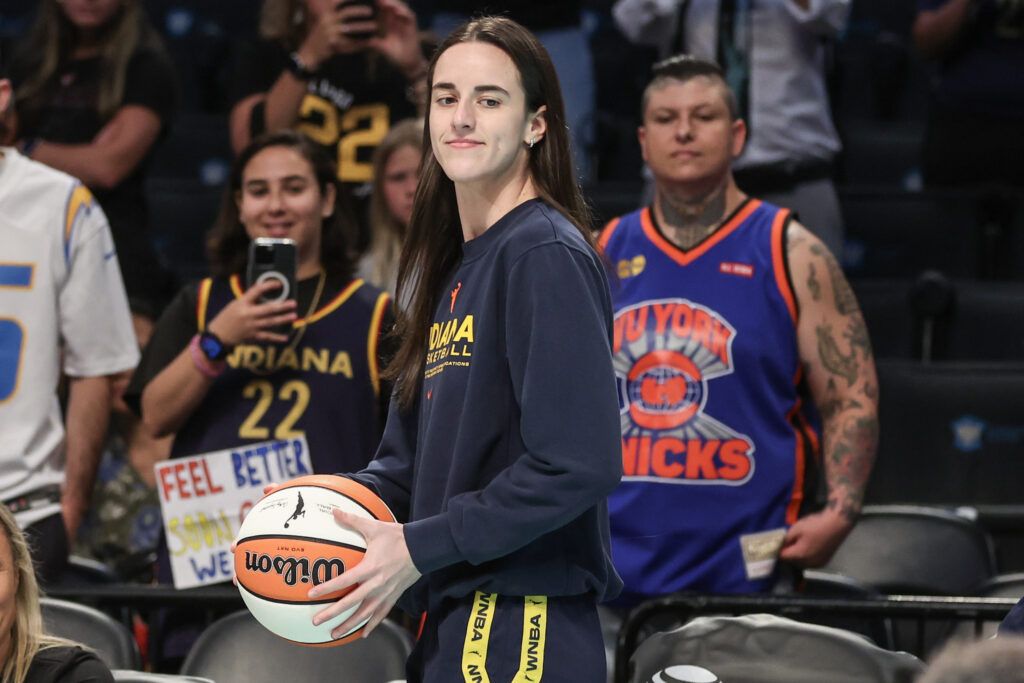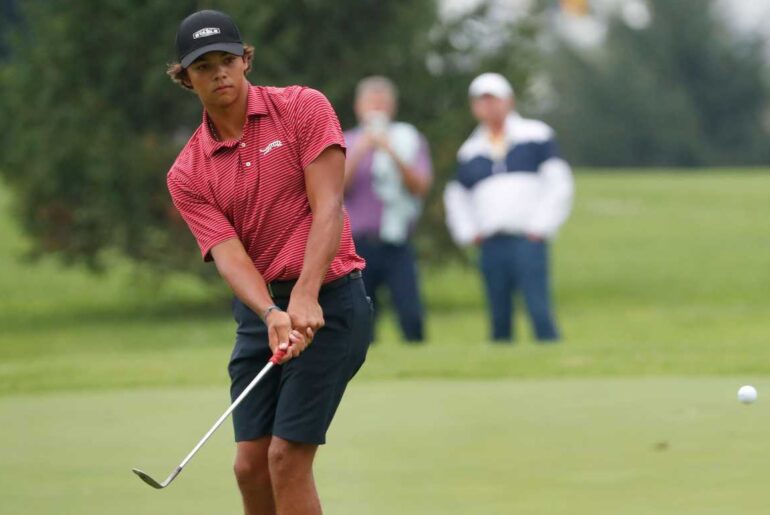This year’s WNBA All-Star Weekend had two names written all over it — Caitlin Clark and the Collective Bargaining Agreement. One was there in spirit, the other hung heavy in every conversation. Clark didn’t suit up due to injury, yet her absence might have shouted louder than her presence.
And just as players wore warm-up shirts demanding fair pay, FS1’s Colin Cowherd made waves by comparing Clark to none other than Tiger Woods. In his eyes, the league’s fight for leverage has already found its greatest weapon.
Why Did Colin Cowherd Draw the Bold Caitlin Clark-Tiger Woods Parallel?
During a recent segment on FS1’s The Herd, Cowherd connected the WNBA’s rising leverage in CBA negotiations directly to Clark’s influence. He went as far as comparing her to golf legend Woods and the transformative effect he had on the PGA Tour.
“Even without Caitlin Clark, it was the second-highest rated WNBA All-Star ever,” Cowherd said. “Two things are clear: if Caitlin Clark plays in the All-Star Game, it will set records. But now, because of her popularity, even if she doesn’t play, it will break records and be the second-highest ever… That’s why the women – despite you not liking the ‘Pay us what you owe us’ shirts have leverage. This is what Tiger Woods did to the PGA Tour.”
“Some of you guys on the internet… you’re not very good business people.”@colincowherd explains why Caitlin Clark has the WNBA players in great position during CBA negotiations pic.twitter.com/71JXeWxXYN
— Herd w/Colin Cowherd (@TheHerd) July 23, 2025
Cowherd’s point hits hard because the numbers back him up. Clark’s gravitational pull has already reshaped the WNBA landscape. In 2024, her first All-Star appearance pulled in 3.44 million viewers, historic numbers never seen before. In 2025, injured and sidelined, viewership dropped 36% to 2.19 million, but it was still the second-most-watched All-Star Game in league history.
“That matters,” Cowherd continued. “Tiger made the most money, but he raised the purses in all tournaments, made a lot of people rich. That was the key.”
Clark’s effect stretches far beyond television ratings. Her absence sent shockwaves through ticket sales, with TickPick reporting a 48% drop in prices after her injury news broke. Meanwhile, her presence throughout the 2024 season helped Indiana lead the league in attendance, averaging over 17,000 fans per game. The so-called Caitlin Clark Effect isn’t speculative anymore. It’s quantifiable.
Cowherd also pointed to the business explosion happening around Clark. “League valuations for all these investors have increased in one year by 168%… The Fever, with Caitlin, has gone up 273%.”
For Cowherd, the math is simple. Clark’s value has supercharged the league’s growth, and timing is everything. “Negotiations in business, in all sectors, are about timing,” he added. “The WNBA is hot, and the contracts are up,” since Clark entered the league.
How Are Rising Ratings and Player Unity Changing the CBA Fight?
The All-Star Weekend became a platform for a different kind of performance. Before tip-off, both Team Clark and Team Collier wore T-shirts that read: “Pay Us What You Owe Us.” The message was unmistakable.
The timing wasn’t accidental. Just days earlier, 40 WNBA players met with league officials and commissioner Cathy Engelbert in the largest player meeting to date. The talks didn’t go well. So the current CBA, set to expire in October 2025 after an opt-out last year, remains unresolved.
Players want a bigger slice of the growing pie, and they’re not shy about saying it. “The players are what is building this brand,” said All-Star MVP and WNBPA vice president Napheesa Collier. “We feel like we’re owed a piece of that pie that we helped create.”
That pie keeps expanding. The WNBA recently signed an 11-year, $2.2 billion media rights deal to begin in 2026, partnering with ESPN, NBC, and Amazon. The league is also mid-expansion, adding the Golden State Valkyries in 2025 and Toronto and Portland following in 2026.
Team valuations are soaring alongside the growth. From 2024 to 2025, the average team value jumped 180%, with the Indiana Fever now worth $335 million, up 273%. The average team is now worth $269 million, and the league as a whole is valued at $3.5 billion.
But the disconnect remains. Players aren’t demanding NBA-scale salaries, but they want revenue shares that reflect their role in growing the game. Just like Clark, whose popularity has become essential to the WNBA’s identity, players believe their contributions deserve recognition when the checks get written.







